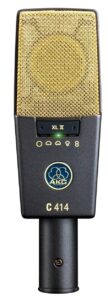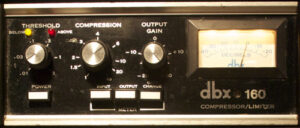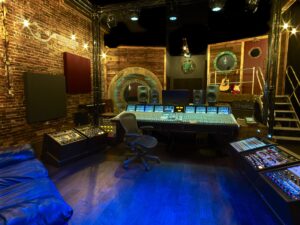Posted by Jim Morris on March 11, 2019
The AKG C 414 condenser microphone has been in production since 1971. It evolved from the tube classic C 12 which first appeared in 1953. The C 12 and its close sibling, the Telefunken 250/251, are still coveted by recording engineers around the world. The Telefunken 250/251were manufactured by AKG and sold by Telefunken with their nameplate and used the same capsule and, in some models, the same tube and transformer.
The C 12 had two models, the C 12 in 1953 and the C 12 A in 1962. The C 414 came about with the introduction of solid-state amplifier technology powered by a DC voltage ranging from+12 to +52 instead of an external supply.
Many more versions have been produced over the years; here are some highlights:
- 1971: C 414. Used a permanently-attached cable.
- 1976: C 414 EB. Used a standard 3-pin XLR-type connector. At some point, the classic “CK12 capsule” was replaced with a nylon-backed version that sounded “different”. YMMV.
- 1980: C 414 EB-P48. Standardized for +48 V phantom power, lower self-noise, improved sensitivity and headroom.
- 1986: C 414 B-ULS. Introduced a totally new amplifier design utilizing 17 transistors instead of 4. As the longest-living C 414 model, it was in production for 18 years.
- 1993: C 414B TL. The first transformerless 414.
- 1993: C 414 B-TL II. A new capsule design fitted to the C414B TL. The same capsule would later be used in the C12VR.
- 2004: C 414 B-XLS / C 414 B-XL II. Used an internal capsule elastic suspension system for the first time. Also introduced a 5th polar pattern: Soft Cardiod.
- 2009: C 414 XLS / C 414 XL II. The latest versions, featuring nine pickup patterns controlled by electronic switching.
Although these mics have changed quite a bit since the first pair of C414EB’s that we had, I still find them to be very powerful tools. It is still my favorite acoustic guitar mic. I also use them for certain singers, drum overheads, saxophones and flutes, guitar cabs (in conjunction with other mics), and even bass cabs and Leslie speaker upper rotors. Not bad for a design first evolved from the tube designs of the early 1950′s!!



